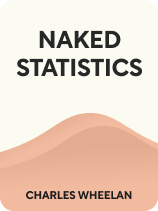

This article is an excerpt from the Shortform book guide to "Naked Statistics" by Charles Wheelan. Shortform has the world's best summaries and analyses of books you should be reading.
Like this article? Sign up for a free trial here .
What is publication bias in research? Why do researchers choose not to report negative findings?
Publication bias occurs when the outcome of a research project influences the decision to publish it. Researchers and publishers may be more inclined to share positive research findings because they make for more attention-grabbing headlines.
Here’s how publication bias can lead to inflated confidence in research findings.
Publication Bias
Publication bias in research is the reason so many studies never make it to journals. This is in part, as Wheelan explains, because “negative findings” don’t make for attention-grabbing headlines. For example, people might not go out of their way to read a paper entitled “Wearing Skinny Jeans Has No Impact On Your Health.”
People are more interested in attention-grabbing headlines, such as a hypothetical: “Are Your Skinny Jeans Killing You? Research Finds Link Between Skinny Jeans and Risk of Heart Attack!”
Wheelan explains that publication bias can lead to misconceptions and inflated confidence in research findings because people never get to see corresponding studies that might negate or temper published research results. For example, suppose a hypothetical study found a small positive correlation between owning a dog and lower rates of a certain type of cancer. In that case, people might rush to adopt a dog without ever knowing that five other studies found no such link.
To combat publication bias, Wheelan explains that medical journals may enforce a policy that all studies on a particular research question be reported, not just the positive ones.
Positive Headlines Grab Public Attention
Even when negative research findings do find their way to publication, they can be overshadowed by positive findings even if they present more reliable data.
For example, the CDC notes that the agency either funded or conducted nine studies between 1999 and 2010 that showed “no link” between childhood vaccinations and autism. Despite the public availability of these research results, the public’s focus remains on the single “positive finding” between research and autism published in 1998, even though this study has been thoroughly discredited.

———End of Preview———
Like what you just read? Read the rest of the world's best book summary and analysis of Charles Wheelan's "Naked Statistics" at Shortform .
Here's what you'll find in our full Naked Statistics summary :
- An explanation and breakdown of statistics into digestible terms
- How statistics can inform collective decision-making
- Why learning statistics is an exercise in self-empowerment






